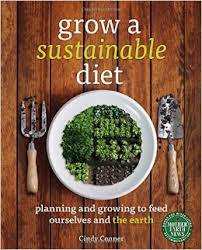|
Everyone loves to prepare a meal with ingredients fresh from their own garden. But for most of us, no matter how plentiful our harvest, homegrown produce comprises only a fraction of what we eat. And while many gardening guides will tell you everything you ever wanted to know about individual crops, few tackle the more involved task of helping you maximize the percentage of your diet you grow yourself. Grow a Sustainable Diet will help you develop a comprehensive, customized garden plan to produce the maximum number of calories and nutrients from any available space. Avoid arriving in August buried under a mountain of kale or zucchini (and not much else) by making thoughtful choices at the planning stage, focusing on dietary staples and key nutrients. Learn how to calculate:
With a focus on the Biointensive gardening method and permaculture principles, getting food to the table with minimum fossil fuel input, and growing crops that sustain you and your soil, this complete guide is a must-read for anyone working towards food self-sufficiency for themselves or their family. Cindy Conner is a GB certified Intermediate-Level Teacher. She researches how to sustainably grow a complete diet in a small space at her home near Ashland, VA, and has produced the videos Develop a Sustainable Vegetable Garden Plan and Cover Crops and Compost Crops IN Your Garden. Follow Cindy’s blog at www.HomeplaceEarth.wordpress.com IMAGE CREDIT: newsociety.com
In The Lean Farm, the author explains concepts and methods to trim time and operating costs. The process is calling 'leaning'. Each aspect of farming operations is explored, including unnecessary effort in the field, which is called waste, caused by wait time and excessive operating expense in the form of too much staff or management. By leaning practices and increasing flow, production is increased and ultimately income as well. Many of the concepts have been successfully used in business and commerce, and the examples in the book show they work just as well for farming. The writing is clear and easy to read with lots of detail and examples to help walk you through the concepts from beginning to end. If you've ever wondered how you might produce more without additional investments of money or acquiring more land, consider applying the methods in this book to minimize waste and maximize value. IMAGE CREDIT: Chelsea Green Publishing
top | Newsletter Home |Table of Contents| Archive
|


 Grow a Sustainable Diet: Planning and Growing to Feed Ourselves and the Earth
Grow a Sustainable Diet: Planning and Growing to Feed Ourselves and the Earth  The Lean Farm: How to Minimize Waste, Increase Efficiency, and Maximize Value and Profits with Less Work
The Lean Farm: How to Minimize Waste, Increase Efficiency, and Maximize Value and Profits with Less Work